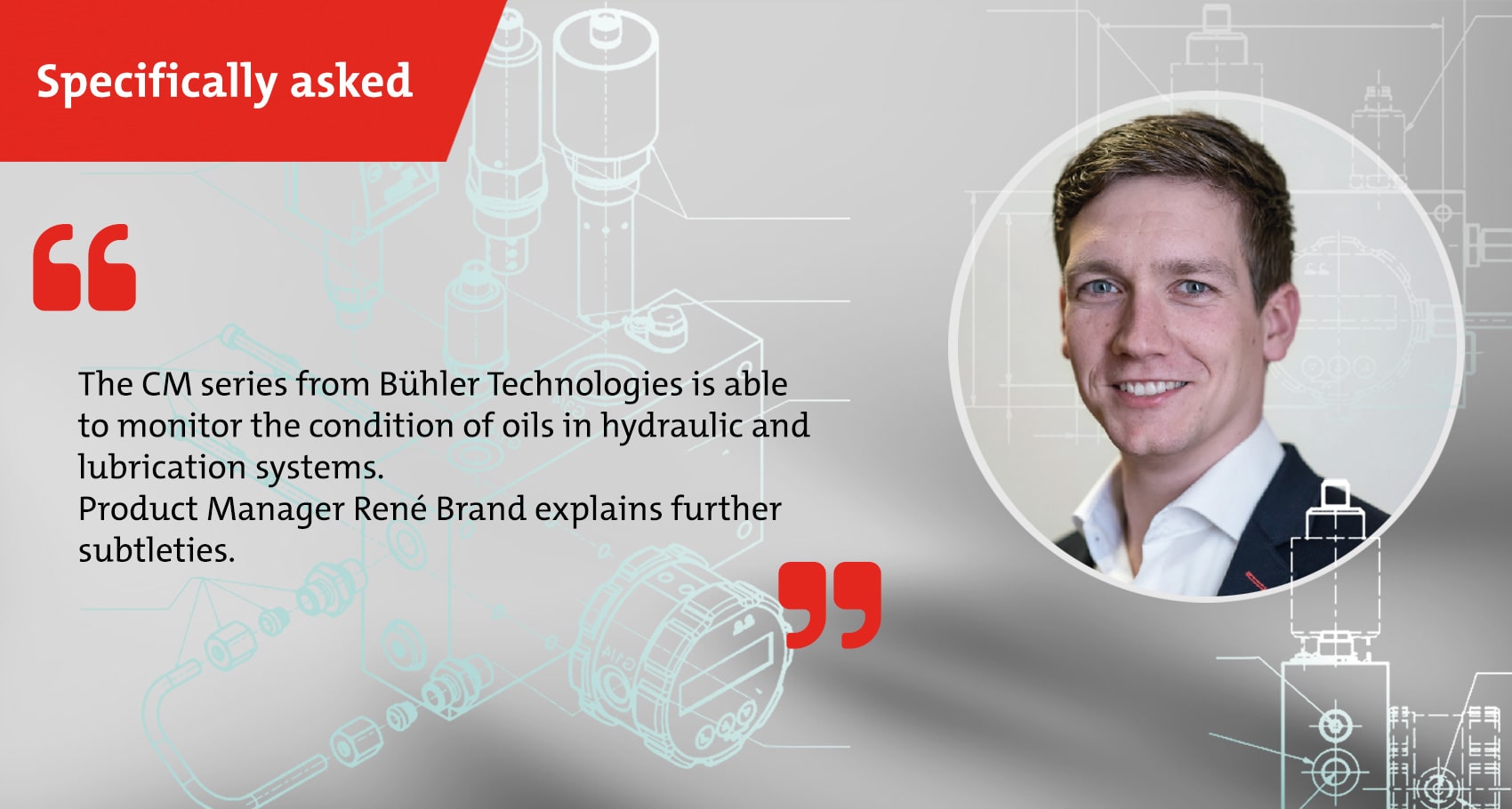Specifically asked
24/02/2023
The CM series consists of various sensors. Which sensors are the most important for condition monitoring of hydraulic systems?
First of all, qualified working filtration is indispensable. It ensures that the required ISO cleanliness class is stabilized in the system. There are two ways to monitor the filtration: the particle monitor BPM for continuous online monitoring of the fluid, or/and monitoring of the dirt holding capacity of the filter with the BCI series. This turns the filter into a CM 'sensor' by making noticeable pressure drop deviations due to increased wear visible over time. If external influences such as temperature fluctuations, high humidity or even the infiltration of cooling water into the hydraulic system are added to the problem, it makes sense to monitor the relative humidity of the oil our BCM-W, since moisture in the oil negatively affects its properties and lifespan. To optimize lifespan, conductivity and permittivity should also be monitored continuously. The BCM-MS sensor uses this to calculate the remaining lifetime of the oil. Since correct oil condition monitoring can never be based on just one parameter, Bühler Technologies also offers the options of combining several sensors with the CM terminal to simplify the installation situation.
Is it conceivable to use the capabilities of the CM series algorithm to also optimize the mixture of oil and additive?
No, this is not possible. The evaluation of the parameters of the BCM sensor series does not allow any direct conclusions to be drawn about the type of additives. Only the change of the parameters is an indicator for the change of the additives. The exact determination of the oil condition remains reserved for the spectroscopic laboratory analysis. Therefore, we always recommend periodic laboratory analysis of the fluid in addition to continuous online monitoring. However, the constant online measurement of the various wear parameters can significantly reduce the number of laboratory analyses needed.
To what extent can the technologies also be used in mobile machines? What installation requirements would have to be met for mobile applications?
These sensors are also fully usable for mobile machines in the hydraulics. Of course, one should adhere to the data sheet specifications for the sensors, especially regarding their protection class. For example, with an IP67 protection class, the devices should be protected from high-pressure cleaning.
Read also further articles on this topic:
Condition Monitoring - Digital system monitoring using the example of hydraulic/lubricating oil service life.
CM Terminal from Bühler Technologies
For more information on the comprehensive condition monitoring programme, see:


